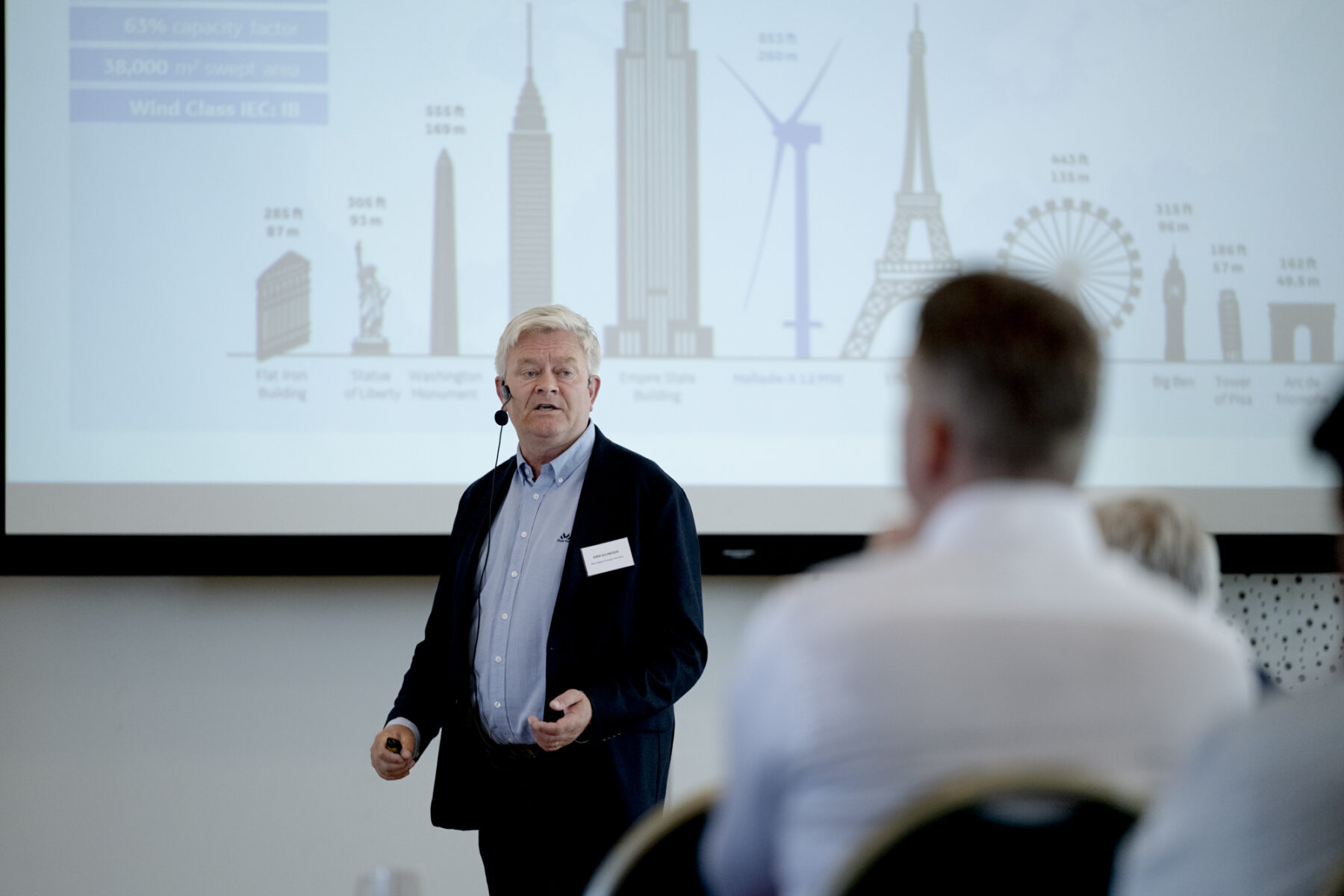Great suppliers event
Around 100 participants attended the suppliers event organized by Ventyr and Blåse at Sola, near Stavanger, and they were treated to a series of exciting announcements for the supplier industry.
During the morning session, Eirik Ellingsen’s presentation particularly stood out and generated enthusiasm. His main points were crystal clear:
- The market potential in offshore wind is enormous.
- Norwegian suppliers should think globally from the outset.

“At the same time, there is one concern that applies to the supplier industry globally: Can they deliver enough and on time? It’s far from certain,” says Ellingsen, who is an advisor at Norwegian Energy Partners (NORWEP).
He listed several areas where the Norwegian supplier industry is in demand:
- Site investigation, environment, met-ocean, and geotechnic
- Feasibility and license planning
- Research institutions
- Concept engineering and front-end design
- Project management and engineering
- Safety – design, equipment, and systems
- Vessel logistics, design, and tailored solutions
- Vessel and marine equipment
- Substations and sub substations
- Critical infrastructure – substation, grid connection, communication
- Security
- Cables, cable systems, planning, installation, and monitoring
- Walk-to-Work (W2W), cranes, and mooring systems
- Floating foundation solutions
- Fixed foundation solutions
- Onshore logistics and ports, preassembly, and load out of the harbor
- Offshore logistics, load out, and transport to the installation site
- Asset integrity management
- Operation and management
- Digitalization
“The sooner Norwegian suppliers can expand internationally, the better. It’s all about international collaboration,” Ellingsen believes.

Renewable energy
Participants also received specific information about areas where Ventyr is looking to engage suppliers. Stephane Bronckers provided an overview of various parts of the project to showcase its breadth before participants had the opportunity to interact directly with the project stakeholders and present their solutions and products.
“I hope many took the opportunity to speak with us during this part, so we can build a small database of suppliers to continue working with,” says Bronckers.
After lunch, the focus shifted more towards floating offshore wind. However, Sander Baksjøberget, Offshore Wind Advisor at Rystad Energy, discussed the market situation for both offshore wind in general and the relationship between floating and fixed-bottom projects.
“Fixed-bottom installations will dominate for some time yet. By 2034-2035, we estimate that floating offshore wind will account for approximately 30% of new installations,” he explains.

The Stavanger region is considered the Energy Capital of Norway, and project manager Ulf Rosenberg discussed how the region is driving green energy transition, even though it is not a recent development.
“We underwent the green shift in energy 100 years ago when we started with hydropower. As a result, we are in the midst of a 200-year perspective on renewable energy production,” says Rosenberg.

